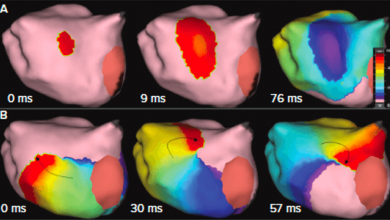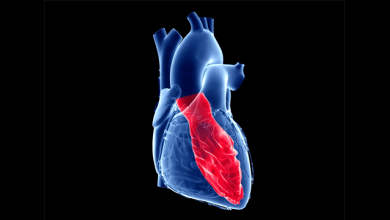Search results
Author(s):
Emmanuel Koutalas
,
Borislav Dinov
,
Sergio Richter
,
et al
Added:
3 years ago
Since the introduction of electroanatomical mapping (EAM) into clinical practice in 1997, remarkable progress has been made in catheter infrastructure, signal recording and processing, catheter guidance and visualisation and simultaneous real-time depiction and processing of different types of critical information during an ablation procedure.1 The latter, along with the comprehension of the…
View more
Author(s):
Saagar Mahida
,
Benjamin Berte
,
Seigo Yamashita
,
et al
Added:
3 years ago
Since the first catheter ablation for cardiac arrhythmia more than three decades ago, ablation technology has continually evolved at a rapid pace. Much of the early progress in the field was made in ablation of supraventricular tachycardias. Following a seminal study from Haïssaguerre et al.1 in 1998, which demonstrated that pulmonary vein triggers are important sources of atrial fibrillation (AF…
View more
Author(s):
Michael Timothy Brian Pope
,
Timothy Rider Betts
Added:
1 year ago
Author(s):
Michael Ghannam
,
Hakan Oral
Added:
3 years ago
Maintenance of sinus rhythm in patients with non-paroxysmal AF is often challenging and complex. Catheter ablation is usually superior to anti-arrhythmic drug therapy alone. However, recurrence rates are high and have remained suboptimal. Although pulmonary vein isolation (PVI) is usually effective in treating paroxysmal AF, it is not sufficient for many patients with non-paroxysmal AF,…
View more
Author(s):
Manav Sohal
,
Rajin Choudhury
,
Philippe Taghji
,
et al
Added:
3 years ago
Ablative therapies for atrial fibrillation have gained popularity worldwide and prompted the development of new, and often complex, tools to achieve higher levels of success. Pulmonary vein (PV) isolation is widely considered as the cornerstone of successful catheter ablation based on seminal work by Haissaguerre et al.1 Successful isolation of the PVs is now the most commonly sought endpoint in…
View more
Author(s):
Hongwu Chen
,
Kit Chan
,
Sunny S Po
,
et al
Added:
3 years ago
Ventricular tachycardia (VT) originating from the Purkinje system is the most common type of idiopathic left ventricular tachycardia (ILVT), especially among young Asians.1,2 It usually has a benign course. Research over the past two decades has deepened our understanding of the anatomy of the Purkinje system and the mechanisms of ILVT. This review focuses on the research history and anatomy of…
View more
Author(s):
Charlotte Brouwer
,
Mark G Hazekamp
,
Katja Zeppenfeld
Added:
3 years ago
The reported incidence of congenital heart disease (CHD) depends on the number of trivial lesions included, such as atrial and ventricular septal defects (ASDs and VSDs). Moderate-to-severe CHD numbers remain stable with 6 per 1,000 live births.1 Survival into adulthood has improved dramatically over the last 25 years and has been driven mainly by a decreased mortality in moderate and severe…
View more
Author(s):
Junaid AB Zaman
,
Andrew Grace
,
Sanjiv M Narayan
Added:
1 year ago
Author(s):
Roland R Tilz
,
Charlotte Eitel
,
Evgeny Lyan
,
et al
Added:
3 years ago
Ventricular tachycardia (VT) is associated with increased mortality in patients with a history of MI. ICD implantation is currently the standard of care for the prevention of sudden cardiac death, and contributes to a reduction of total mortality.1 Despite effective treatment of ventricular arrhythmias with the use of anti-tachycardia pacing (ATP) or shocks, ICDs do not prevent VT. Furthermore,…
View more
Author(s):
Amir A Schricker
,
Junaid AB Zaman
,
Sanjiv M Narayan
Added:
3 years ago
Catheter ablation is more effective than pharmacological therapy for the secondary prevention of patients with paroxysmal1,2 and persistent3,4 atrial fibrillation (AF) and has an emerging role in the primary prevention of paroxysmal AF.5,6 Nevertheless, in randomised clinical trials (RCTs) its success in treating patients with paroxysmal AF is 40–60% for a single procedure and 70% for multiple…
View more














